Predict the 2023 Cal Football Season: Results!
A narrow path to 6 wins means there's no room for error in the quest for bowl eligibility
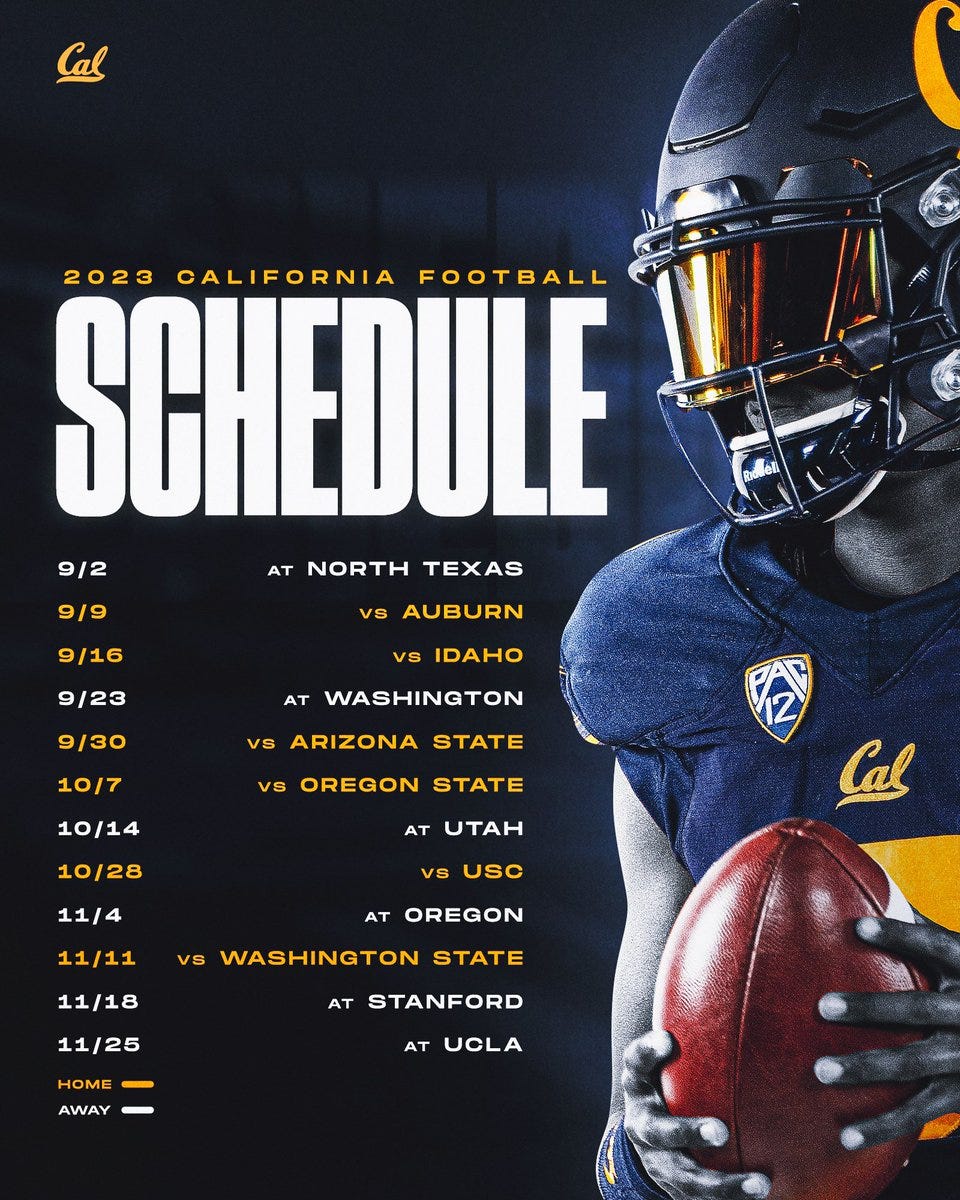
After an offseason filled with upheaval—within the team, across the conference, and across the college football landscape—we are finally ready to watch some Cal football again. And I hope you’re ready for the true Cal football experience, because no game is an easy win and the Bears have a miniscule margin of error in the quest for bowl eligibility. Let’s have a look at the schedule and lament the long and difficult road that awaits us over the next several months.
A couple weeks ago I invited the W4C readership to predict the Bears’ chances of winning each game on the schedule. Although upgrades to the offensive coaching staff, return of some key players (BRETT JOHNSON), and an influx of transfer portal additions give us reason to expect the team to be better, an examination of the schedule reveals that a moderately improved team would still have a difficult time in an extraordinarily competitive Pac-12 this season.
The table below highlights the average prediction for each game along with the standard deviation, a measure of uncertainty. Games with larger standard deviations (Auburn, USC, Oregon) have more variation in their predictions while games with smaller standard deviations (North Texas, Idaho) indicate more agreement across our predictions.
We favor the Bears in half their games, although games like Oregon State and Washington State are essentially coin flips (likewise we barely favor the opponent in coin-flip games against Auburn and UCLA). In fact, the schedule only has three strongly favorable games for the Bears: North Texas, Idaho, and Big Game. Although FCS games usually have predictions around 95%, Idaho’s top-ten FCS ranking and Cal’s inability to win comfortably against FCS teams have tempered expectations against the Vandals. A loss in any of those three highly favored games almost certainly dooms our hopes of a bowl game. At 64.3%, the ASU game is alone in the probable-but-not-guaranteed category of wins. Then we have a bunch of toss-ups in the 40-60% range: Auburn, Oregon State, Washington State, and UCLA. The Bears need to win at least two of those to stay on the path to bowl eligibility; fortunately three of those games are at home (winning all three of those home games would be a huge step towards 6 wins). The rest of the games fall in the gauntlet category: UW, Utah, USC, Oregon. While we could count on the early Wilcox teams to steal one of those games in a delightful upset, such upsets have been less common in recent years. Without securing a major upset, Cal has a very narrow (but nevertheless feasible) path to bowl eligibility.
The following chart takes each game and shows the spread of predictions. This provides more insight than the means and standard deviations above by showing the whole shape of the range of predictions on a 0-100 scale.
Simulating the Season
One of the challenges of working with these season predictions is that we are dealing with percentages, but the ultimate outcome is binary: win or loss. This is particularly tricky with the coin-flip games where it’s just as likely that Cal goes 4-0 against its coin-flip opponents as it is that the Bears go 0-4. We know the range of outcomes: the Bears are going to win somewhere between 0 and 12 games. But how likely is each outcome? To answer that question, we turn to simulation.
The simulation process is simple and straightforward. I draw one prediction at random for the North Texas game and use it to predict the outcome. If it’s 70%, then I have a 70% chance of drawing a win and 30% chance of drawing a loss. After drawing that outcome, I move to the Auburn game, pick another prediction at random, draw a win or loss to add to the record, and repeat this process. I do this for all 12 games to get a simulated number of wins for that particular season. I repeat this 1,000,000 times to get a huge sample of possible outcomes, from an 0-12 season after which the university disbands the football team and abandons Division I sports to a 12-0 season after which the Big Ten, Big 12, ACC, and SEC get in a bidding war for the privilege of paying Cal tens of millions of dollars per years to grace their conference with our sturdy Golden Bears. The plot below shows how likely each possible outcome is.
The likeliest outcome is 6 wins, which occurred in 23.97% of those simulated seasons. 7 wins was second-likeliest at 22.92%. In fact, 70.99% of those seasons ended in bowl eligibility for the Bears. At the extreme ends of the scale, 31 of the 1,000,000 seasons ended 0-12 and 234 ended 12-0.
Next we move beyond total number of wins to see Cal’s most likely path as the season unfolds. The following chart shows the Bears’ possible outcomes after each game (e.g. 2-0, 1-1, and 0-2 after the second game) and the probability that Cal achieves each of those outcomes. So after the North Texas game, there’s a 76% chance of being 1-0 and a 24% chance of being 0-1, and so on.
Following the most likely outcome after each game, Cal opens the season with a win over North Texas followed by a loss to Auburn, and a continuing pattern of alternating wins and losses: Idaho-W, UW-L, ASU-W. OSU breaks the pattern by giving the Bears a two-game winning streak, although that is then balanced out by a two-game losing streak to Utah and USC. 4-5 and 5-4 are equally likely records after Oregon, although 5-5 becomes the most likely record after Wazzu. A win over LSJU followed by a loss to UCLA caps the season at 6-6. Many deviations are possible from that path, but that appears to be the likeliest route to a 6-6 season.
Awards
As is tradition, we must hand out awards for the most optimistic and most pessimistic predictions, along with those that come closest to the larger community’s predictions.
Sunshine Pumpers
First, the most optimistic of the bunch.
Amid all the uncertainty of conference realignment, we can always count on reliable Calamo to shower us with blind optimism about Cal football. You’re doing good work, Calamo.
Old Blues
Next, we have the gloomiest predictions.
As pessimistic as 2.5 wins sounds, it’s not an unreasonable outcome as 2 wins was Nick’s worst-case realistic season prediction.
The Voice of Reason
Finally, we took everyone’s predictions calculated how many standard deviations each game prediction was from the group average, and added them together to figure out who was closest to the W4C hivemind across the whole season.
And Joltimpact is the winner!
Thanks to all who participated! We survived another offseason and can start talking about real, meaningful Cal football just a few short days!
.


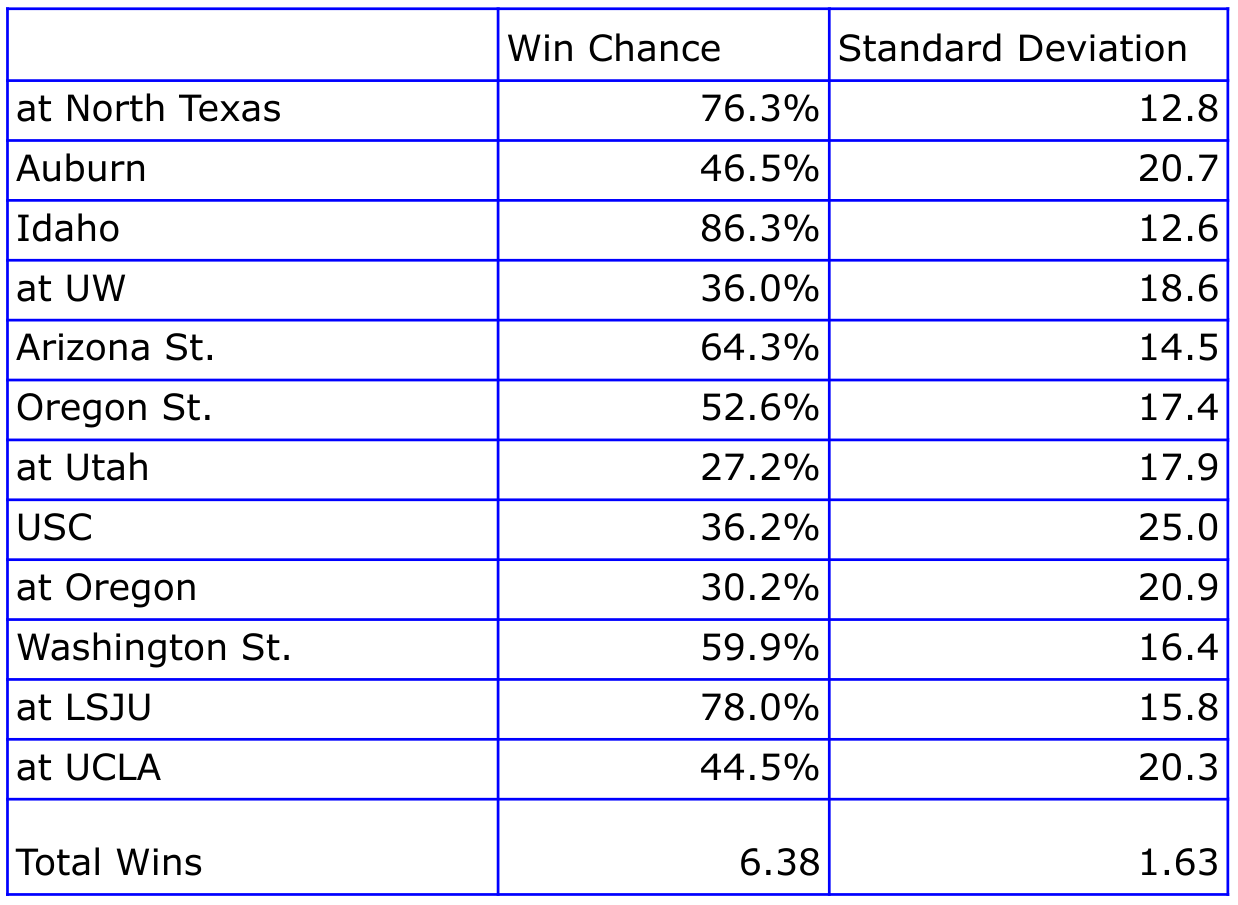
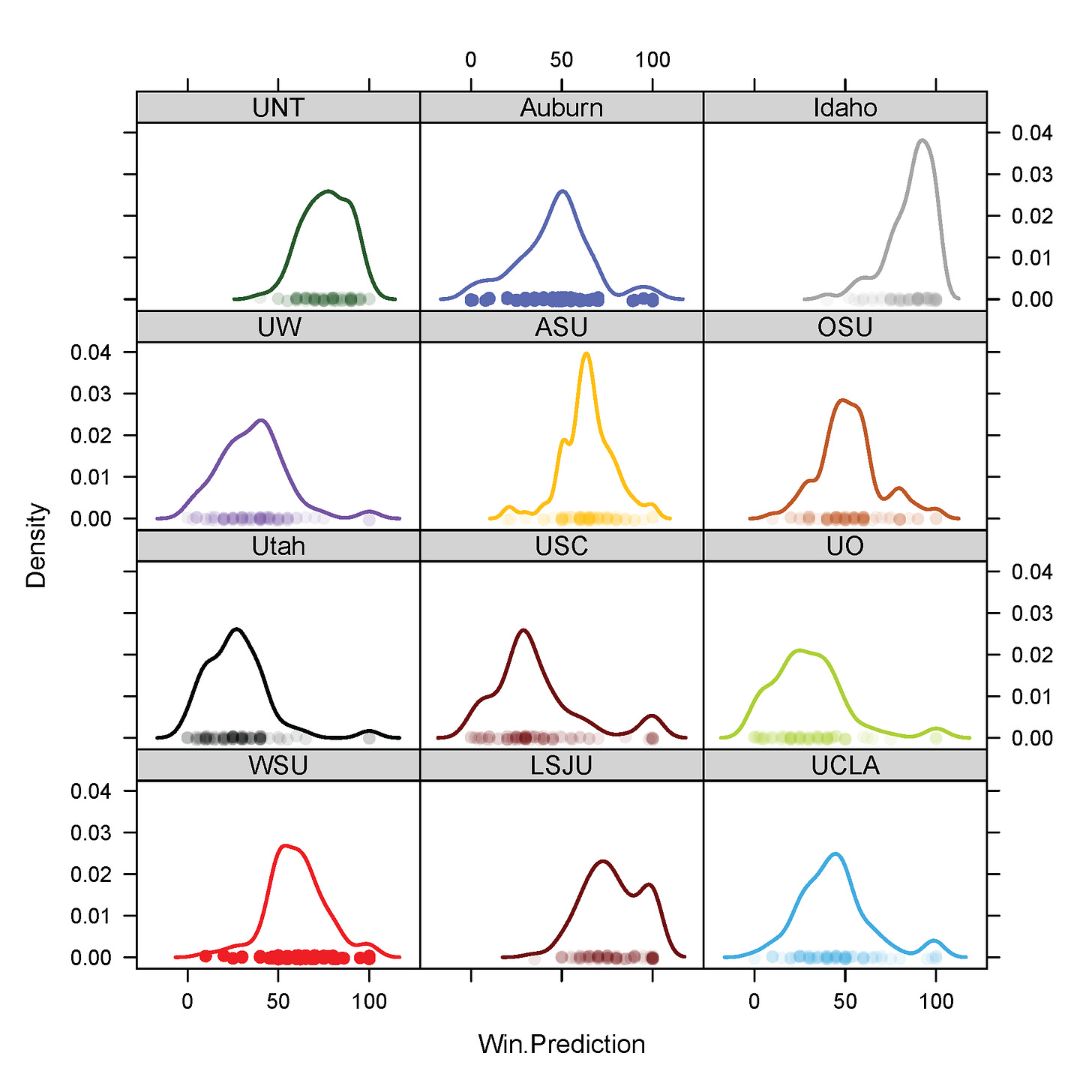
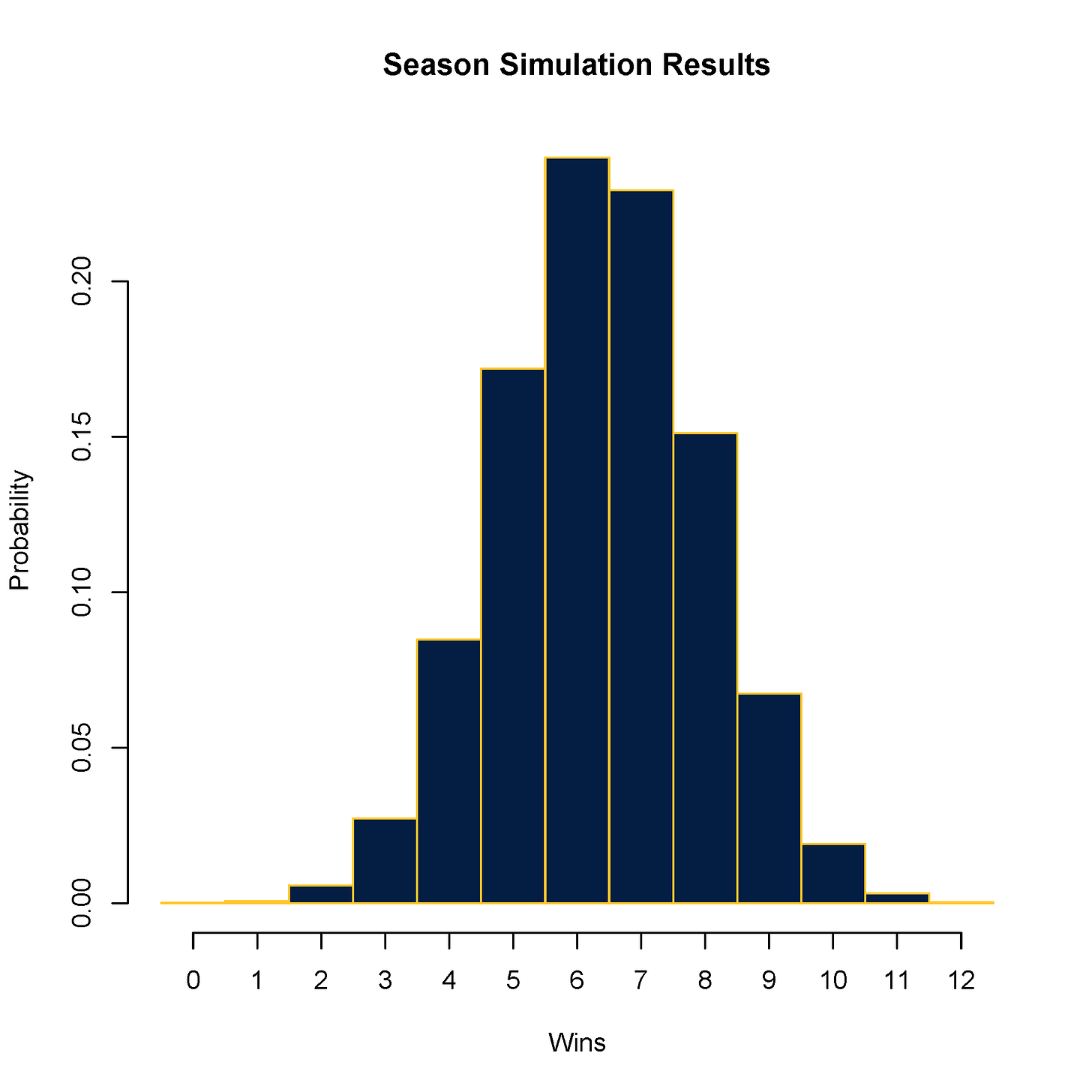
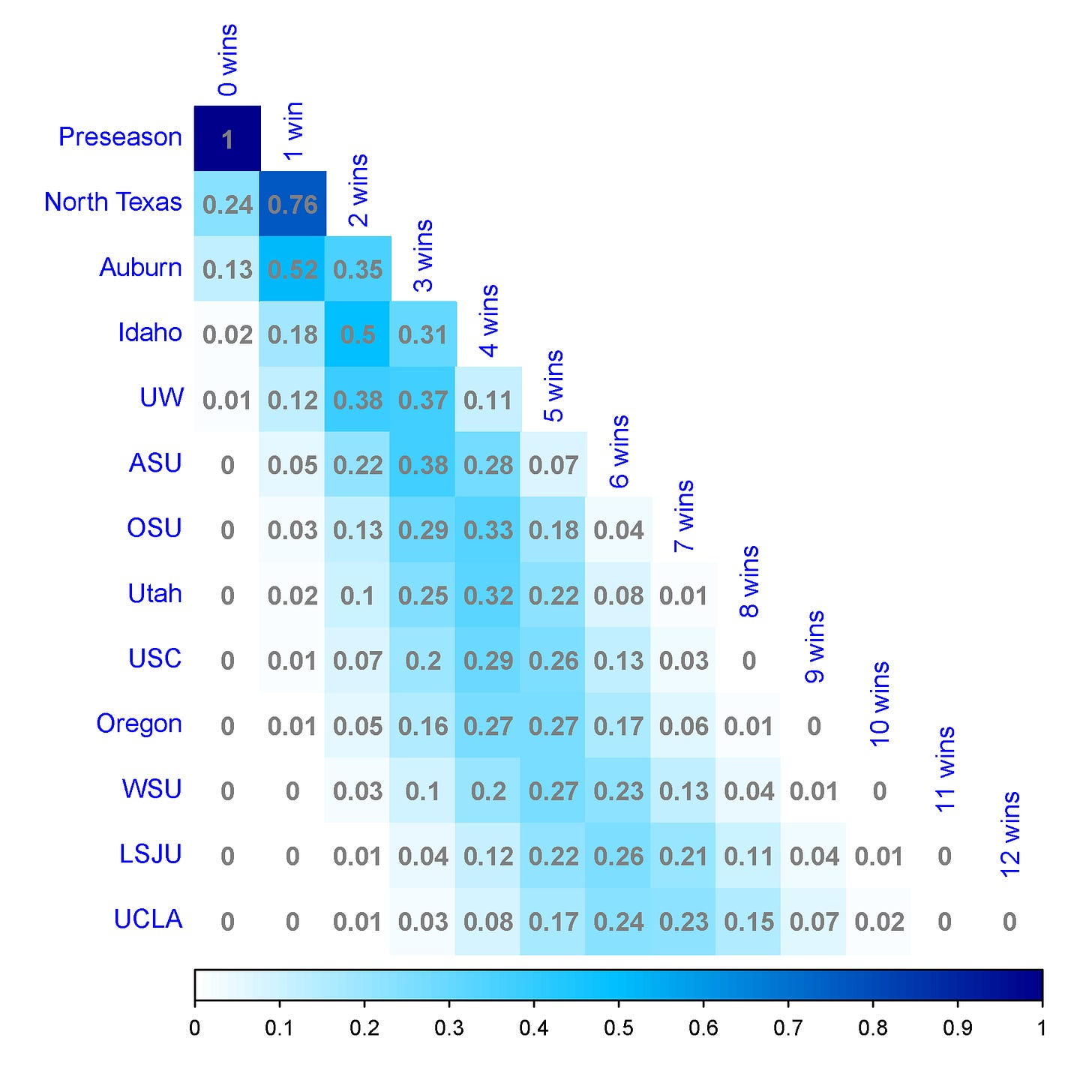
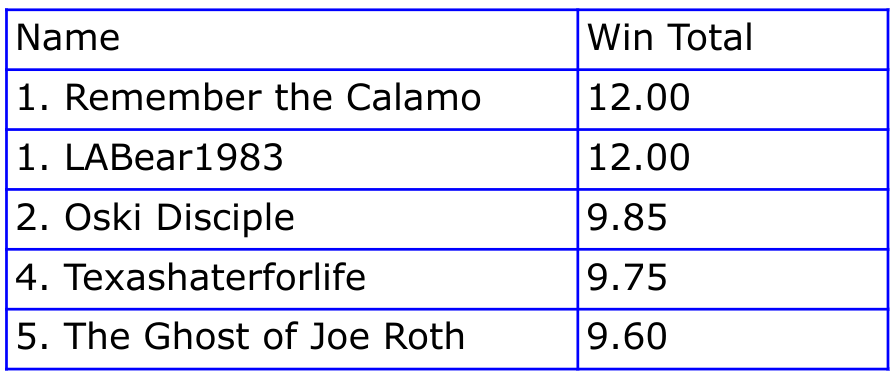

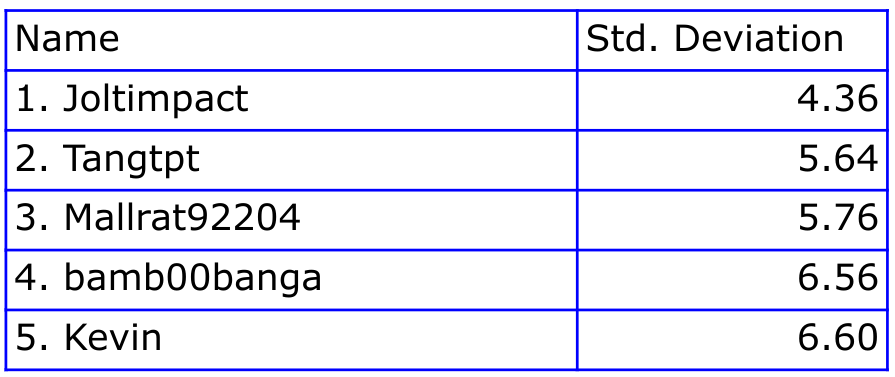
One thing I've noticed is that, especially in PAC-12 play, we tend to give ourselves better odds against what we perceive as lesser or equal competition, while having the opposite view against stronger teams. While this might appear to be common sense, a closer examination of our wins and losses from last year uncovers a different pattern. Many of our closely contested games were against teams we initially considered stronger, while we encountered more difficulties against opponents we believed we should have defeated. I'm grappling with understanding this conundrum, and my current interpretation is that the teams we categorize as 'weaker' or 'beatable' view us as their must-win games. Consequently, they elevate their performance beyond the norm to secure a victory against us. The question remains: why do we seem to adopt a similar approach against better competition, although resulting in close losses against teams with superior records, yet not against lower-ranked teams? This dilemma leads us to experience anticlimactic losses against strong teams and incredibly disheartening defeats against middle to lower-ranking PAC teams.
Last year we lost by one score at Notre Dame.
#9 U$C
#18 fUCLA
We lost by a larger margin against the following teams:
Arizona by 18 points
Washington State by 19 points
Oregon State by 28 points
Outlier in the sense that it coincided with the expectation:
Lost to #8 Oregon by 18
"Satisfied" given:
1. Previous season
2. Our present skill/recruitment levels
Over five years, I expect to be progressively less satisfied with middling results. Our tolerance of middling is what put us behind the Eight Ball.
Win or die on the vine.
Go Bears!